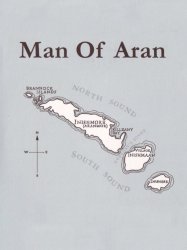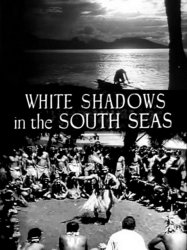Nanook of the North is a american film of genre Drama directed by Robert Flaherty released in USA on 11 june 1922 with Berry Kroeger
Nanook of the North (1922)

If you like this film, let us know!
- Infos
- Casting
- Technical infos
- Photos
- Videos
- Film quotes
- Characters
- Music
- Awards
Nanook of the North (also known as Nanook of the North: A Story Of Life and Love In the Actual Arctic) is a 1922 American silent documentary film by Robert J. Flaherty, with elements of docudrama, at a time when the concept of separating films into documentary and drama did not yet exist.
In the tradition of what would later be called salvage ethnography, Flaherty captured the struggles of the Inuk man named Nanook and his family in the Canadian Arctic. The film is considered the first feature-length documentary. Some have criticized Flaherty for staging several sequences, but the film is generally viewed as standing "alone in its stark regard for the courage and ingenuity of its heroes."
In 1989, this film was one of the first 25 films to be selected for preservation in the United States National Film Registry by the Library of Congress as being "culturally, historically, or aesthetically significant".
Synopsis
The documentary follows the lives of an Inuk, Nanook, and his family as they travel, search for food, and trade in northern Quebec, Canada. Nanook, his wife, Nyla, and their family are introduced as fearless heroes who endure rigors "no other race" could survive.Actors

Berry Kroeger
(Narrator (1939 Re-release) (uncredited))
Comments
Leave comment :
Suggestions of similar film to Nanook of the North
There are 13 films with the same actors, 7 films with the same director, 75566 with the same cinematographic genres (including 66 with exactly the same 3 genres than Nanook of the North), to have finally 70 suggestions of similar films.If you liked Nanook of the North, you will probably like those similar films :

Louisiana Story (1948)
, 1h18Directed by Robert Flaherty, Serge Roullet
Origin USA
Genres Drama, Documentary, Adventure
Themes Films about children
Rating64%





A first-hand viewing of the film reveals a story dealing with the adventures of a young Cajun boy and his pet raccoon, who live a somewhat idyllic existence playing in the bayous of Louisiana. A sub-plot involves his elderly father's allowing an oil company to drill for oil in the inlet that runs behind their house.
 , 1h24
, 1h24Directed by Robert Flaherty, Friedrich Wilhelm Murnau
Origin USA
Genres Drama, Adventure, Romance
Themes Seafaring films, Transport films
Rating73%





Aged emissary Hitu arrives by western sailing ship to the island of Bora Bora, a small island in the South Pacific, on an important mission. He bears a message from the chief of Fanuma to the chief of Bora Bora: a maiden sacred to their gods has died, and Reri has been given the great honour of replacing her because of her royal blood and virtue. From this point on, she is tabu: "man must not touch her or cast upon her the eye of desire" upon penalty of death. This is painful news to Reri and the young man Matahi, who love each other. Matahi cannot bear it. That night, he sneaks her off the ship, and the couple escape the island by outrigger canoe.

Elephant Boy (1937)
, 1h25Directed by Robert Flaherty, Zoltan Korda
Origin United-kingdom
Genres Drama, Adventure
Themes Films about animals, Mise en scène d'un éléphant, Mise en scène d'un tigre, Mise en scène d'un mammifère
Actors Sabu, Walter Hudd, Wilfrid Hyde-White, Allan Jeayes, Bruce Gordon, Bruce Gordon
Rating63%





Toomai (Sabu), a young boy growing up in India, longs to become a hunter. In the meantime, he helps his mahout (elephant driver) father with Kala Nag, a large elephant that has been in their family for four generations.

Man of Aran (1934)
, 1h16Directed by Robert Flaherty
Origin United-kingdom
Genres Drama, Documentary
Themes Seafaring films, Transport films, Films about the labor movement, Documentaire sur le monde du travail
Rating71%





The film opens with a boy crab fishing. We then observe three fishermen landing a flimsy holed curragh in the force of the wind and the huge waves. Next we see some of the hardships of mundane Aran life: making a field on the barren rocks using seaweed and soil scraped out of rock crevices, fixing holes in the boat with a mixture of cloth and tar, rendering the liver of the giant basking shark. The film follows as the men of Aran harpoon the huge beasts from their bád iomartha (a wooden carvel hulled craft), the film ends with another storm sequence where the distressed family on shore watch the prolonged struggle of the boat to land safely against the elements.
 , 1h28
, 1h28Directed by Robert Flaherty, W. S. Van Dyke
Origin USA
Genres Drama, Action, Adventure, Romance
Themes Seafaring films, Transport films
Actors Monte Blue, Raquel Torres, Robert Anderson, Dorothy Janis
Rating67%





Dr. Matthew Lloyd, an alcoholic doctor, is disgusted by white people's exploitation of the natives on a Polynesian island. The natives dive for pearls. However, numerous accidents occur and one diver dies. In anger, Dr. Lloyd punches Sebastian, the employer. He tricks Dr. Lloyd onto a ship with a diseased crew (thinking they are ill), and his men rough up Dr. Lloyd and send the ship off into a storm. Dr. Lloyd survives and is washed ashore on an island where none of the natives has ever seen a white man....
 , 1h10
, 1h10Directed by Robert Flaherty
Origin German
Genres Biography, Documentary
Themes Documentary films about the visual arts, Documentaire sur une personnalité
Actors Fredric March
Rating69%






Moana (1926)
, 1h17Directed by Robert Flaherty, Frances Flaherty
Origin USA
Genres Documentary
Themes Seafaring films, Transport films
Rating67%





Tourné sur la petite île polynésienne de Savai'i, le film montre la vie quotidienne d'une famille d'indigènes de l'île, dans le village de Safune.

Blood Alley (1955)
, 1h55Directed by William A. Wellman
Origin USA
Genres Drama, Thriller, Action, Adventure
Themes Seafaring films, Transport films, Political films
Actors John Wayne, Lauren Bacall, Paul Fix, Anita Ekberg, Mike Mazurki, James Hong
Rating61%





The ship of Captain Tom Wilder, an American Merchant Mariner, is seized by the Chinese Communists and he is imprisoned by them for two years in the vicinity of Amoy Island. Captain Wilder is helped to escape from prison, dressed as a Soviet officer. The huge Chinese who transports him to Chiku Shan village (Big Han) will not tell him why he has been broken out of prison.

Down to the Sea in Ships (1949)
, 2hDirected by Henry Hathaway
Origin USA
Genres Drama, Action, Adventure
Themes Films about animals, Seafaring films, Transport films, Cétacé, Children's films, Mise en scène d'un cétacé
Actors Richard Widmark, Lionel Barrymore, Dean Stockwell, Cecil Kellaway, Gene Lockhart, Berry Kroeger
Rating72%





Whaling ship captain Bering Joy (Lionel Barrymore) takes his grandson Jed (Dean Stockwell) on a whaling expedition in order to teach the young boy real life values such as honesty, courage, wisdom, fairness and hard work.

Gun Crazy (1950)
, 1h26Directed by Joseph H. Lewis
Origin USA
Genres Drama, Thriller, Action, Crime, Romance
Themes Heist films, Gangster films, Escroquerie
Actors Peggy Cummins, John Dall, Russ Tamblyn, Morris Carnovsky, Mickey Little, Harry Lewis
Rating75%





At the age of 14, Bart Tare robs a hardware store and steals a gun. He is sent to reform school by a sympathetic Judge Willoughby (Morris Carnovsky), despite the testimony of his friends Dave and Clyde, his older sister Ruby and others that he would never kill any living creature, even though he has had a fascination with guns even as a child. Flashbacks provide a portrait of Bart who, after he kills a young chick with a BB gun at age seven, is hesitant to harm anyone with guns even though he is a good shot with a pistol.
 Connection
Connection